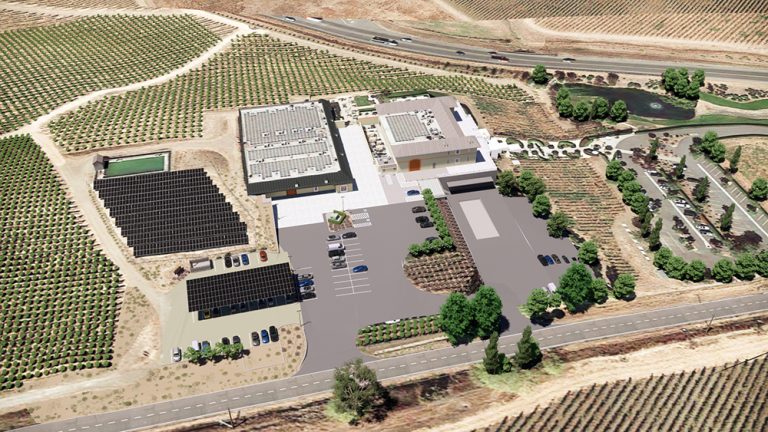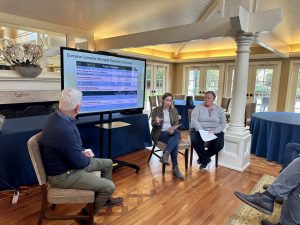
At 3:20 am on Aug. 24, 2014, a 6.0 magnitude (severe) earthquake shook the Carneros region near Domaine Carneros, located on Duhig Road, just a few miles inland from San Francisco Bay.
Downtown, the classic 1901 Goodman Library, home to the Napa County Historical Society, was significantly damaged. Though only one person died, area damages were estimated at $1 billion. The South Napa Quake was the largest earthquake in the San Francisco Bay Area since the famed 6.9 Loma Prieta earthquake in 1989.
The earthquake hit just two weeks after picking for 2014 vintage sparkling wine was underway.
Importantly from the perspective of the wine industry, the earthquake interrupted power. More than 69,000 people, including many wineries, were without power.
Fast forward to 2017 when a series of fires hit Napa and Sonoma. The 2017 fires alone caused $14.5 billion in damages. In response, in 2018 Pacific Gas & Electric (PG&E) began implementing Public Safety Power Shutoffs (PSPS) when fire danger and winds were high.
Again, wineries were not guaranteed power, especially during critical harvest periods when a lot of power is used for cooling and operations.
A Novel Solution
For Domaine Carneros, a sparkling wine producer owned by the famous French Champagne house Taittinger, the events sparked their interest in finding a more stable energy solution. They had already installed the largest solar array of any winery in the world in 2003. But they did not have a way to store solar energy.
“When we first discussed the project in 2018 and 2019, our motivation was to create energy independence in a power outage having recently experienced the 2014 earthquake and the 2017 fires,” said CEO Remy Cohen, who presented in-depth details about the winery’s analysis and planning efforts April 5 at Beringer Winery during the first day of Napa Green’s six-day climate summit Rise Green.
Working with Stacey Ellis, capital projects manager, the two, in conjunction with their solar vendors, found a microgrid was not only feasible but also cost effective. Initially, they were looking at a payback of 11 years, but subsequent PG&E rate increases and passage of new federal legislation sweetened the pie.
“PG&E has increased rates quicker and more than the model, so we anticipate a shorter ROI now,” said Cohen. The project costs nearly $1.9 million but federal investment tax credits (ITC) and state Self-Generation Incentive Program (SGIP) incentives of $576,000 will kick in, in addition to the winery’s net utility bill savings. The winery will also no longer need to rent a standby generator.

“The combination of the existing rooftop solar and the microgrid will allow us to generate 75% to 80% of the winery’s annual energy use,” she said.
The team looked at several alternatives during the planning process.
“The initial thought was to purchase just the generator and transfer switch that would shut off the grid and start up the generator, but that cost was $500,000 to $1 million and would sit most of the time just waiting for an outage and could take years to pay itself back,” she said. “The microgrid is operating and saving us money 365 days a year for an improved ROI and resiliency.”
Projected PG&E tax increases also make the case for a microgrid. Rates increased 16% in 2022 and are projected to rise dramatically over the next few years. Increases are projected to rise 18% in 2023 and more in the next three years, totaling a 32% increase by 2026, according to the PUC’s fact sheet.
While many businesses have used microgrids to lower energy costs by what is called “peak shaving,” or using solar during PG&E’s highest rate periods, typically wineries have shied away from installing a microgrid due to high energy use at harvest.
But Cohen said their new system will be able to carry larger loads with a generator as backup.
“The battery can handle our full energy load for two hours. Therefore, it will operate longer than when we are operating below peak load. So, if the power goes out during harvest and we are operating at peak load, the battery will provide at least a couple hours of our energy demand and then there is a seamless transition to the generator.
“Although we are not completely independent from using a generator, the microgrid and battery will reduce our reliance on the generator and fuel consumption.
“Eventually, the winery may be able to improve the efficiency of our operations,” she added, “or get a battery with more capacity to reduce our generator reliance even further. The generator will handle any loads over the battery capacity. But most of the load will be covered by the solar and battery during the day and the generator will only be needed during the evening and at night when we are ‘islanding.’”
Why do the project now? Cohen said the 30% federal tax credit was one reason. But there are others.
“The battery technology is evolving rapidly so batteries can store more now in a smaller footprint than before,” she added.











